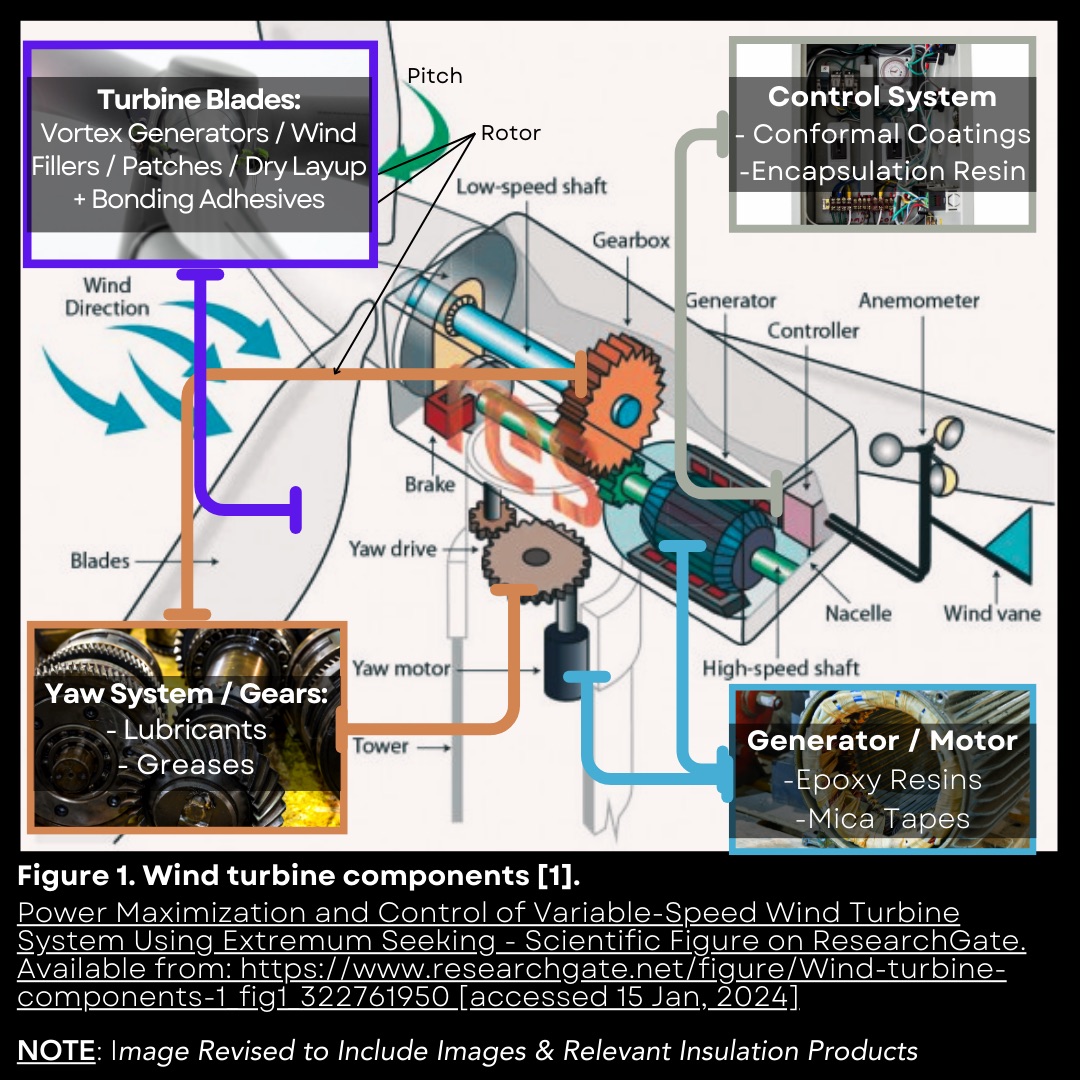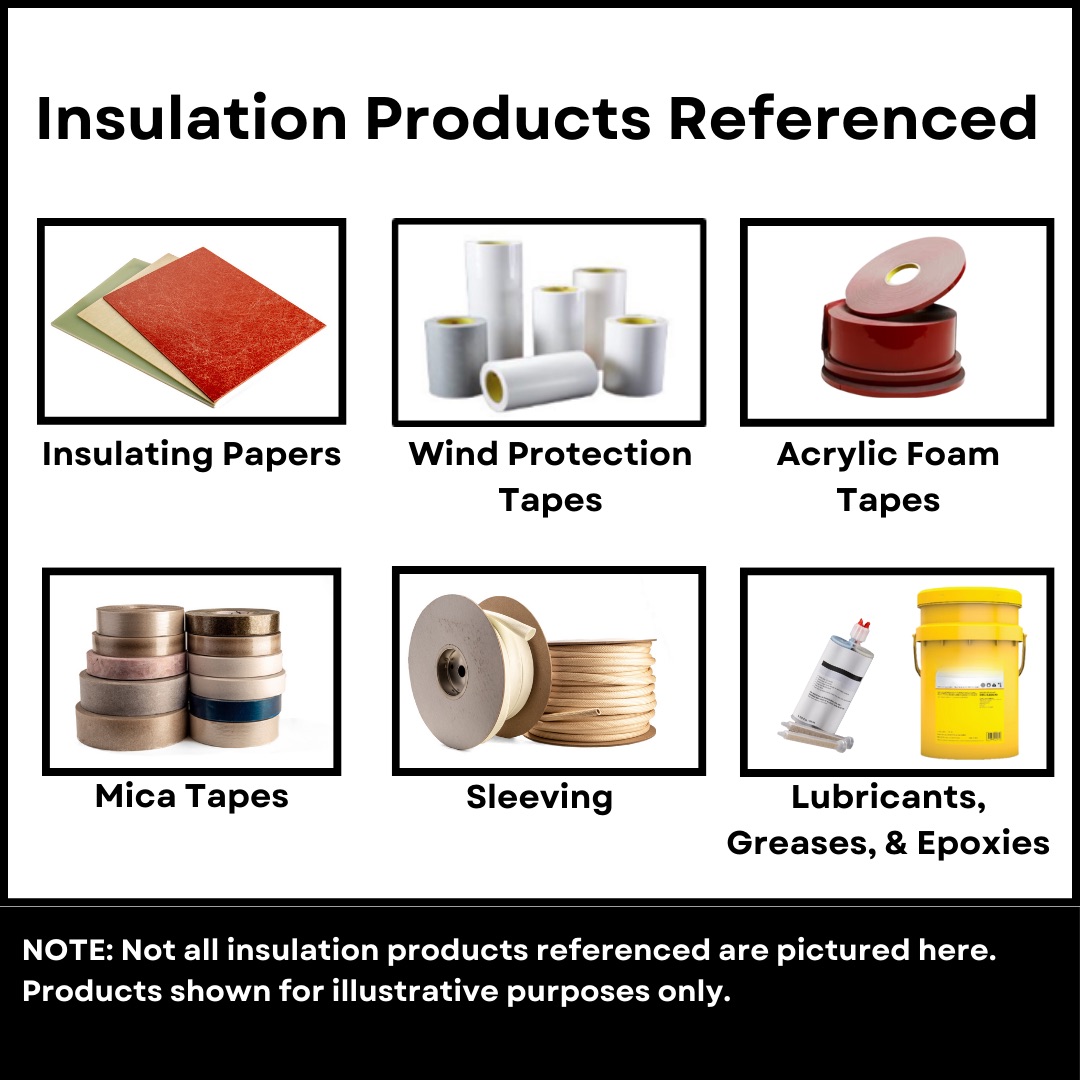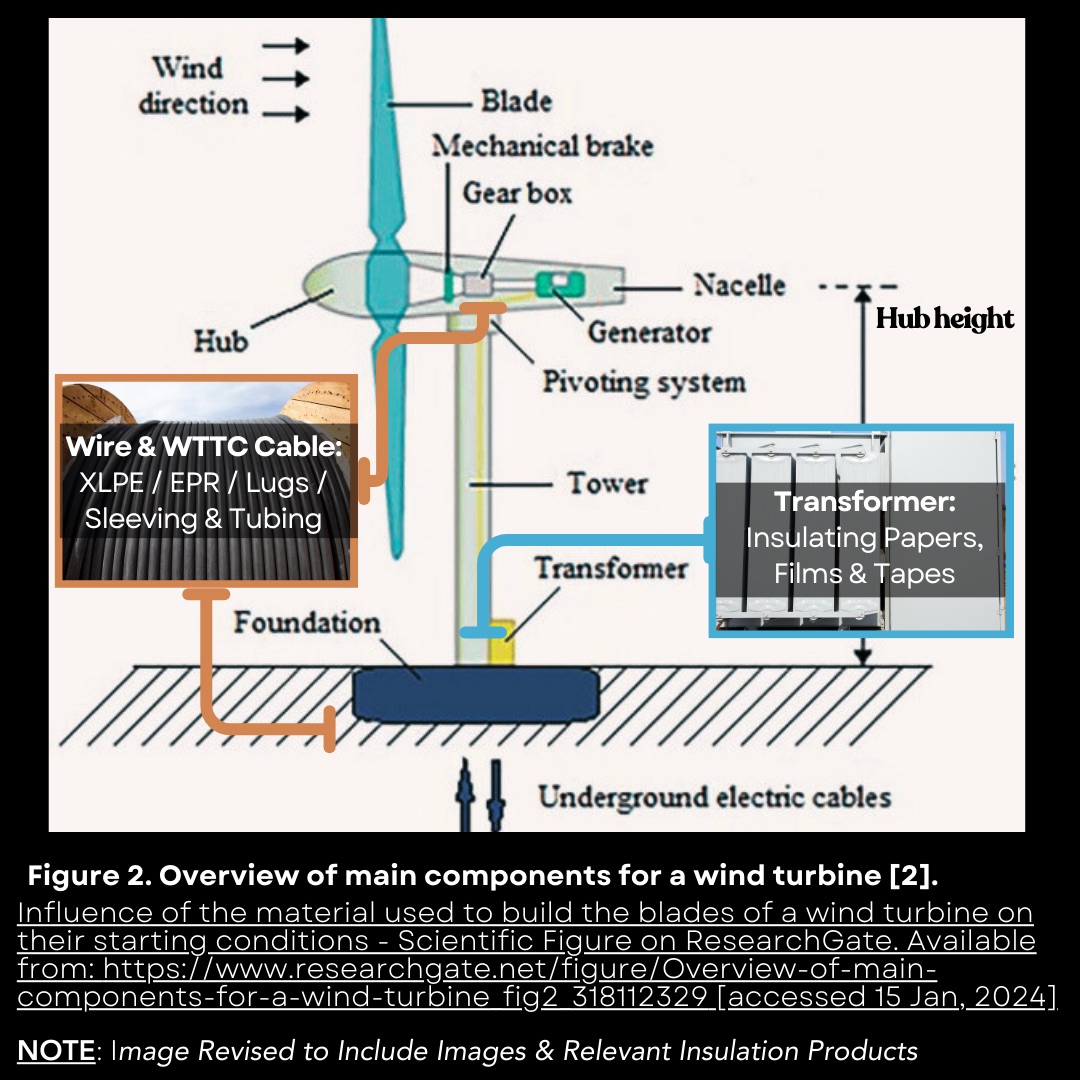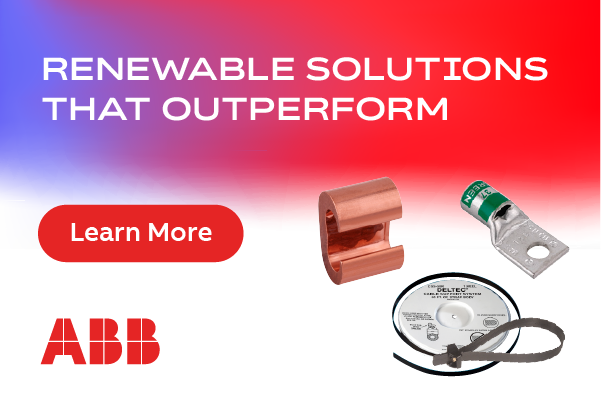The Crucial Role of Electrical Insulation for Wind Turbines
Wind turbines play a pivotal role in the global transition to sustainable energy sources. However, the harsh environmental conditions in which wind turbines operate, such as extreme temperatures, high humidity, and exposure to various contaminants, pose significant challenges to their durability and reliability. To ensure the longevity and optimal performance of wind turbines, electrical insulation products should be employed strategically to safeguard critical components from damage.
Wind turbine components, particularly those within the nacelle and hub, are subjected to a wide range of environmental and operational stressors. Without adequate protection, these stressors can lead to electrical failures, reduced efficiency, and even catastrophic damage to the turbine.
Electrical insulation serves as a protective barrier, preventing electrical currents from escaping and causing short circuits or other malfunctions. In addition to protecting against electrical issues, insulation materials also guard sensitive electronic components from environmental factors, enhancing the overall reliability of wind turbines.
Key Components and Applications
1. Generators and Motors - “Power Generation”:
Wind turbine generators and motors are at the core of power generation. These components often operate in high-stress environments, experiencing temperature variations and mechanical stresses. Electrical insulation products such as epoxy resins and mica tapes, are commonly used to insulate the coils and windings, preventing electrical breakdowns and ensuring the efficient conversion of wind energy into electrical power.
2. Power Cables – “Power Network”:
Power cables connect various components within the wind turbine, transmitting electricity from the generator to the grid. Insulating materials, including cross-linked polyethylene (XLPE) and ethylene propylene rubber (EPR), are employed to coat and protect these cables. These materials enhance the cables' resistance to moisture, chemicals, and abrasion, ensuring a reliable and secure electrical connection.

3. Control Systems – “Power Regulators”:
The control systems of wind turbines house intricate electronic components that regulate the turbine's operation. Electrical insulation products, such as conformal coatings and encapsulation resins, provide a protective layer around these components, shielding them from environmental factors and preventing malfunctions caused by dust, moisture, and temperature extremes.
4. Transformers – “Power Converters”:
Transformers play a crucial role in converting electrical power to the desired voltage for efficient transmission. To prevent electrical breakdown and enhance the insulation resistance, transformer components are often coated with insulating materials like oil-impregnated paper, epoxy resin, or other advanced dielectric materials.
Maintenance to Enhance Performance and Longevity
To ensure optimal performance and longevity of wind turbines, proper maintenance is crucial. Several maintenance products play a pivotal role in protecting turbines from environmental stressors and wear. Key maintenance products, including lubricants and greases, wire and cable solutions, connectors and lugs, tapes, vortex generators, wind fillers, blade repair materials, and dry layup adhesive products.
1. Lubricants and Greases to Minimize Friction & Protect from Environmental Damage
Wind turbines consist of numerous moving parts, including gears, bearings, and yaw systems, which require efficient lubrication to minimize friction and wear. Specialized lubricants and greases are designed to withstand the harsh conditions within the turbine, providing effective lubrication while resisting environmental factors such as moisture and temperature extremes. Regular application of these products ensures smooth operation and extends the lifespan of crucial components.
2. Wire & Cable Solutions to Withstand Abrasions & Movement
The internal wiring of a wind turbine is exposed to constant movement and environmental stress. High-quality wire and cable solutions, featuring durable insulation materials, protect against abrasion, moisture, and temperature fluctuations. Robust cables ensure the reliable transmission of electrical power from the generator to the grid, contributing to the overall efficiency of the turbine.
3. Connectors & Lugs to Secure Components & Prevent Downtime
Proper electrical connections are vital for the efficient functioning of wind turbines. Connectors and lugs facilitate secure and reliable electrical connections between various components. These components are often exposed to harsh weather conditions, making corrosion-resistant materials essential. Regular inspection and replacement of connectors and lugs contribute to the prevention of electrical faults and downtime.

4. Tapes for Insulation, Thermal Protection, Barriers, & Bonding
Tapes serve multiple purposes in wind turbine maintenance. Examples include foil tapes for insulation, PTFE/fiberglass tapes for thermal protection, and wind protection tapes to shield sensitive areas from environmental elements. Additionally, acrylic foam tapes provide bonding solutions for various applications. These tapes enhance insulation, protect against weathering, and contribute to the overall structural integrity of the turbine.
5. Vortex Generators to Control Airflow and Improve Performance
Vortex generators are aerodynamic devices strategically placed on turbine blades to control airflow and improve performance. These small devices help delay airflow separation, reducing turbulence and enhancing the efficiency of the turbine. Regular inspection and replacement of vortex generators contribute to maintaining optimal aerodynamics and power output.
6. Wind Fillers to Fill the Gaps
Wind fillers, often made of durable and weather-resistant materials, are used to fill gaps and seams in the turbine structure. They prevent water ingress, reduce noise, and enhance the overall integrity of the turbine. Regular inspection and replacement of wind fillers contribute to minimizing the risk of structural damage and maintaining the turbine's efficiency.

7. Blade Repair Materials to Restore the Lifespan of Turbine Blades
Turbine blades are exposed to significant stress from wind, leading to wear and potential damage over time. Blade repair materials, such as composite patches and adhesives, are crucial for addressing cracks, delamination, or erosion on the surface of the blades. These materials restore structural integrity and prevent further damage, ultimately extending the lifespan of the turbine.
8. Dry Layup Adhesive Products to Prevent Corrosion
During maintenance or inactivity, wind turbines should undergo dry layup procedures to protect against corrosion. These products are applied to critical components to create a protective barrier, preventing the onset of corrosion during downtime. This application contributes to the overall reliability and longevity of the turbine.
Electrical insulation products play a critical role in safeguarding wind turbines from the challenging environmental conditions they face during operation. The proper selection and application of maintenance products are integral to the reliability and longevity of wind turbines. From preventing electrical failures, protecting sensitive components, and ensuring the integrity of power transmission, these insulation materials contribute significantly to the reliability and efficiency of wind energy systems. As technology continues to evolve, ongoing research and development in insulation materials made of Nanocomposites and Bio-Based Insulation will further enhance the resilience and sustainability of wind turbines, advancing the global transition to clean and renewable energy sources.
Heather Broman is the Director of Business Operations at Pittsburgh Electrical Insulation (PEI), a manufacturer, converter, and distributor of electrical insulation products, with locations in Pittsburgh, PA and Brownsville, TX.
Pittsburgh Electrical Insulation (PEI) | www.peipittsburgh.com
Author: Heather Broman
Volume: 2024 March/April








